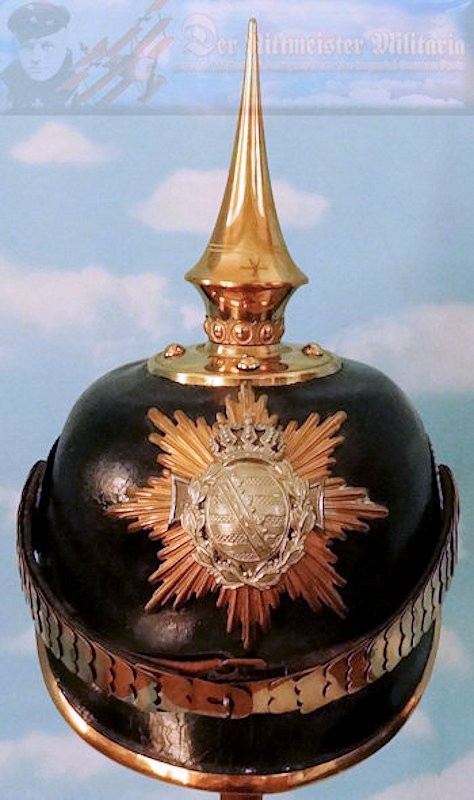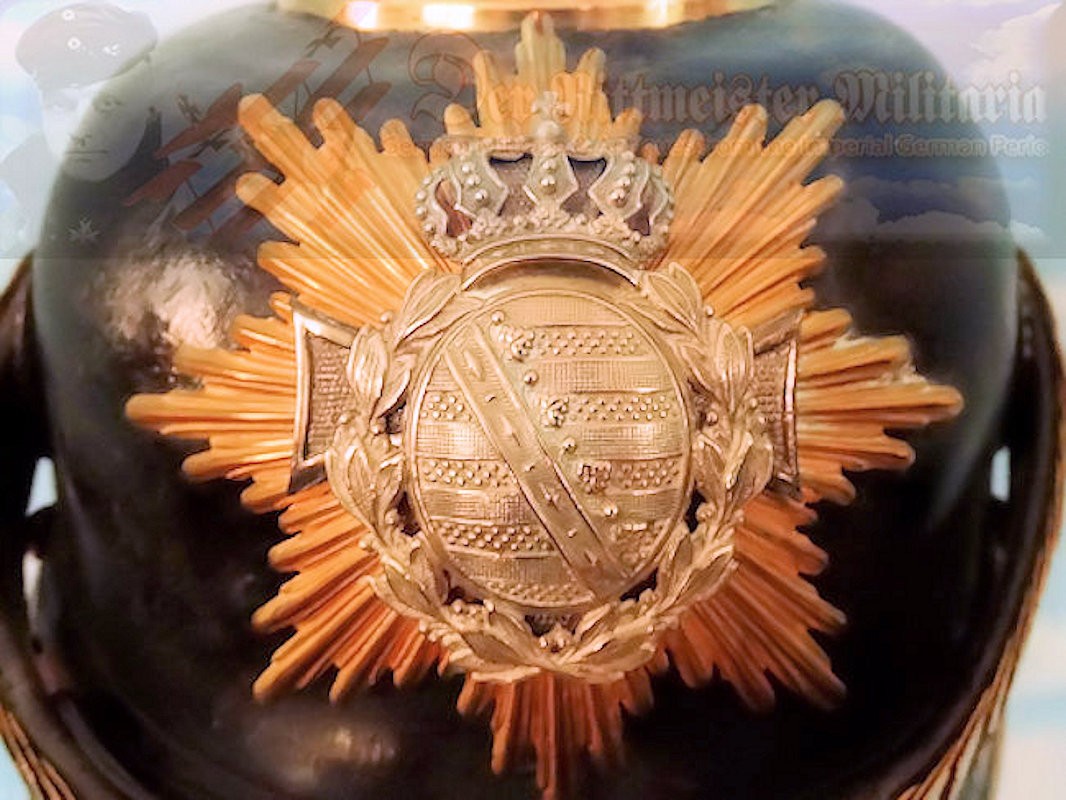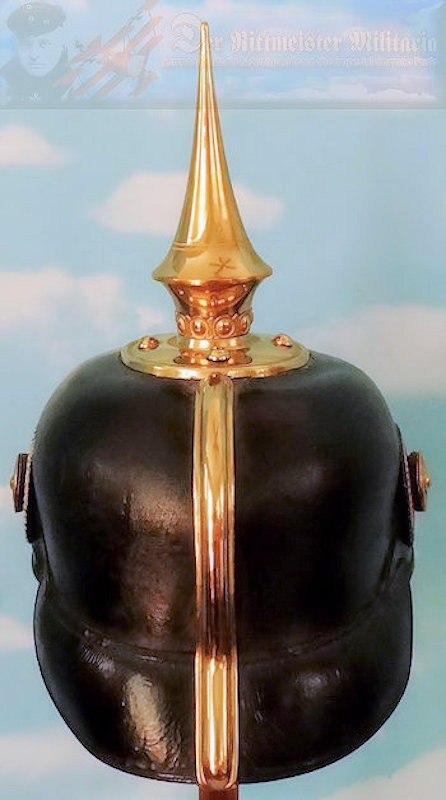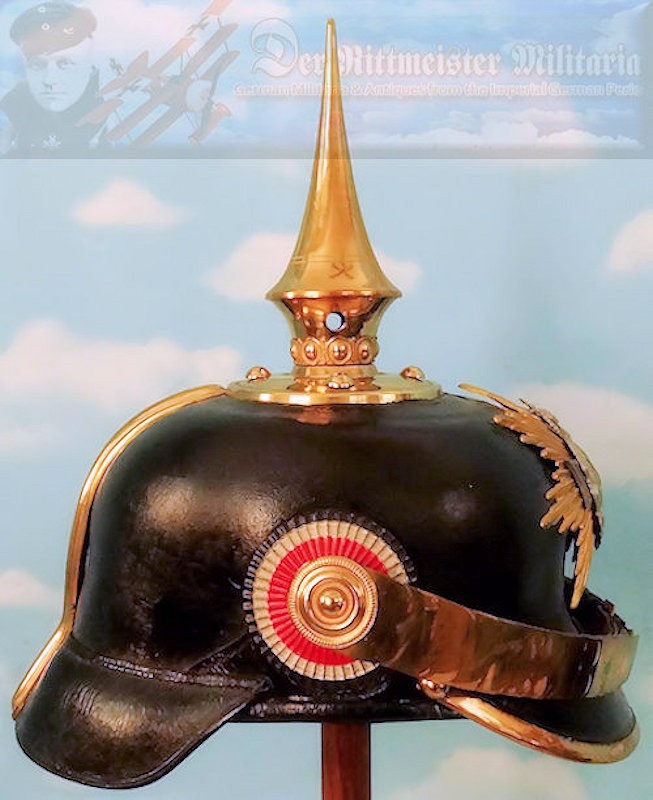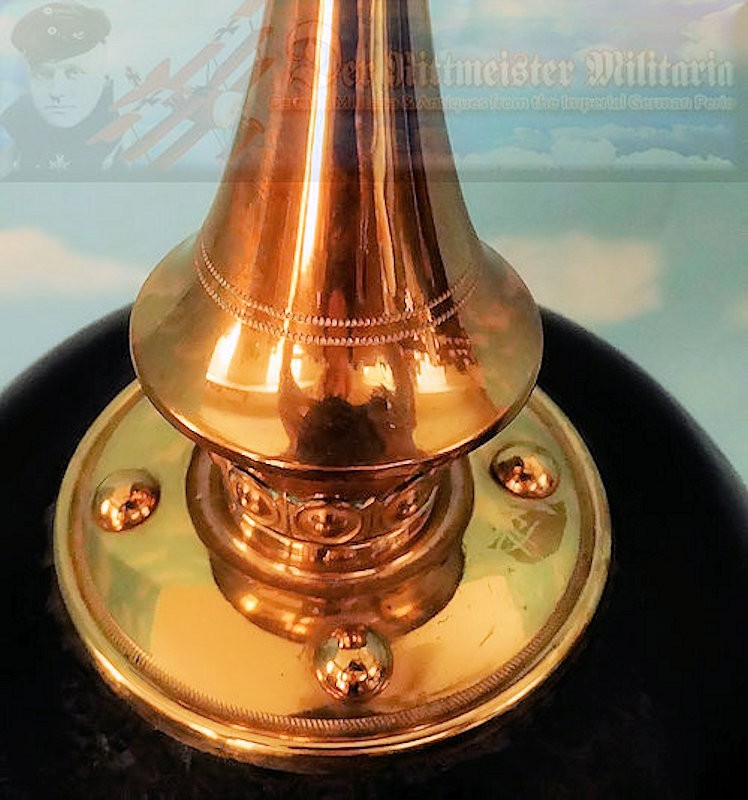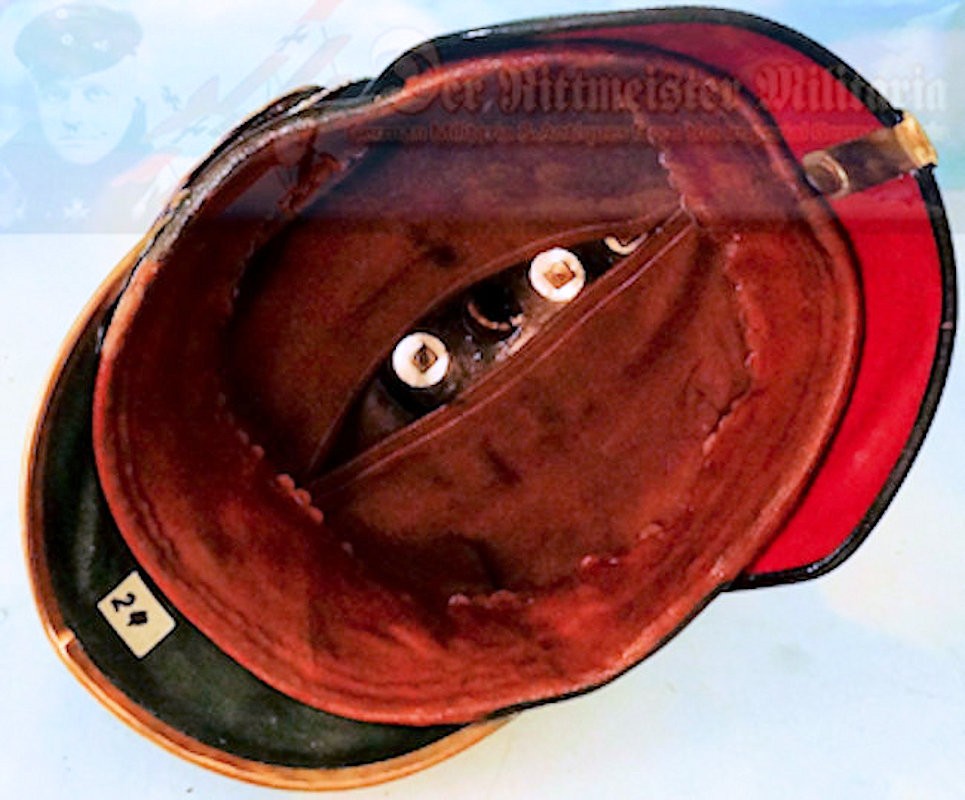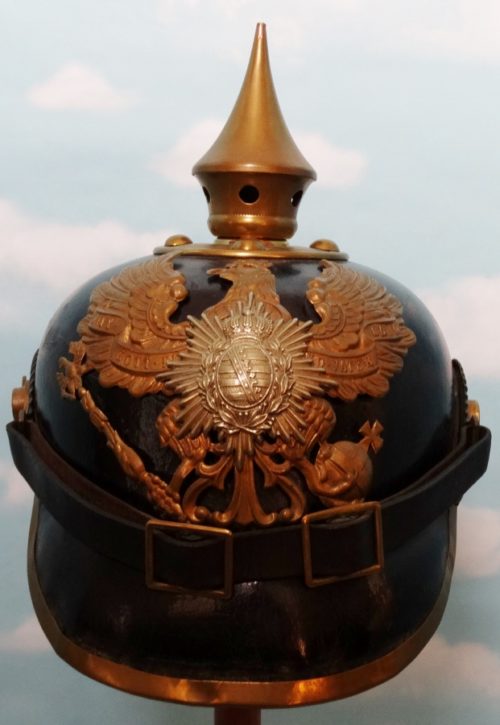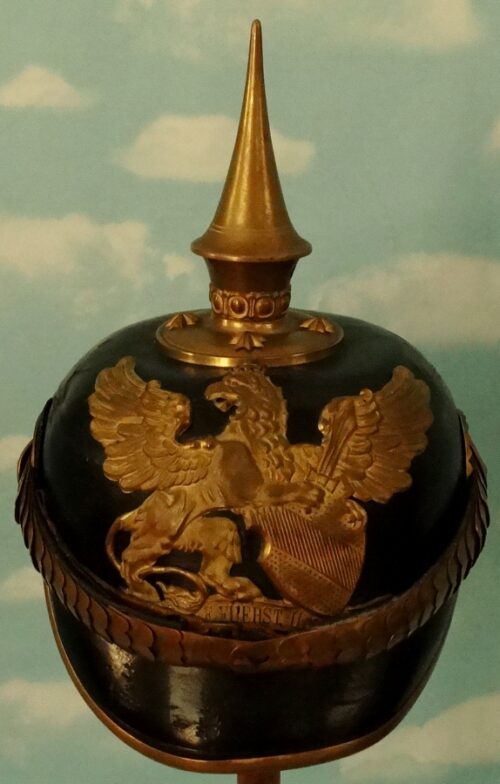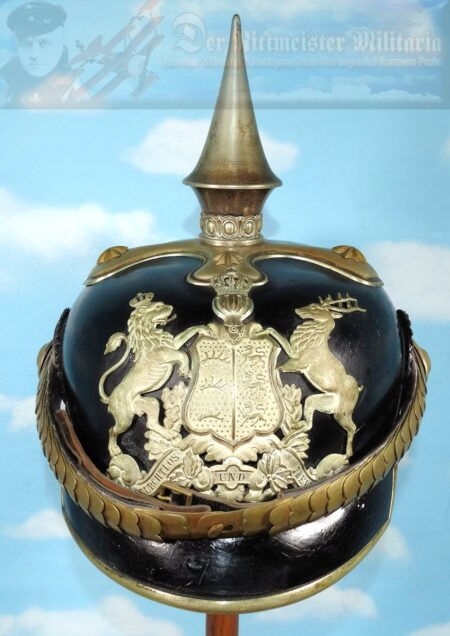Description
SAXONY – PICKELHAUBE – INFANTERIE – FÄHNRICH.
The Imperial German Army had a rank for which the USA does NOT have an equivalent known as a “Fähnrich.” The best way to describe the rank is that it indicated an officer’s candidate or cadet. It ranked above a Senior NCO (Feldwebel), but below the rank of Leutnant (equivalent to the U.S. Army’s 2nd Lieutenant). In Napoleonic times, the same position was referred to as an “Ensign” by the British, even though it had nothing to do with the navy!
This brief explanation allows to begin our description of a Saxon line-infantry regiment Fähnrich’s spiked helmet. [One notable difference exists between this helmet and that belonging to an officer ranking as a Leutnant (or above), which we will address later in this description].
Our helmet possesses a particularly delightful leather body that is smooth, clean, and supple, just like a baby’s bottom! The helmet has had the best of care from every family member or collector who has owned it before it came to us. [To maintain your helmet in the best possible condition, apply a high-quality leather conditioner at least twice a year. Doing so more often is perfectly fine, as it helps keep its leather body moist. A lack of moisture causes the leather to dry out and crack. Using a leather conditioner on ALL of your leather goods will contribute to a longer life of your collectible].
All of its furniture is brass, with the exception of the wappen’s center. The wappen consists of a brass sunburst with Saxony’s silver-toned Coat-of-Arms in its center. We can tell that this is an officer’s wappen because the crown is open (voided). Non officer’s wappens sport closed crowns (this is true for every Imperial German state). Examine those crowns, boys and girls, and you will quickly see that you have an officer, a Fähnrich, or a One-Year-Volunteer’s (OYV’s) helmet.
All of these brass fittings simply glow. Its removable spike is the ultra-tall Saxon officer’s spike. The helmet also sports a pearl ring just below the spike. Its only NON-officer detail is the lack of officers’ stars. Instead, the helmet displays NCO-style studs. Its officers’ theme even extends to the Officers’ Saxon-pattern Reich’s and State’s kokarden. Five Imperial German states (Baden, Hesse-Darmstadt, Mecklenburg-Schwerin, Württemberg, and Saxony) employed this particular kokarde pattern instead of the usual Prussian one.
The helmet’s interior features a moderately-used, dark-brown, leather sweatband and a rust-colored silk liner. The liner has seen more use and wear than the sweatband, exhibiting evidence of perspiration. The barest signs of shredding/running are also visible. Under the silk liner we see NO evidence of double holes, and all of its original hardware is present. Its front visor boasts a small label with a number on it. [The latter leads me to surmise that the helmet once belonged to a larger collection and this was its identification number within the collection].
This is an elegant pickelhaube that has been well cared for during the last one-hundred-plus years. [I personally find this spiked helmet more intriguing than an officer’s helmet. The number of Fähnrichs within the Imperial German Army was limited compared to officers and NCO’s]. You will be hard-pressed to find many pickelhauben in such excellent condition, regardless of the rank or regiment represented!
At Der Rittmeister Militaria, we strive to bring you the best in spiked helmets, or pickelhauben (plural for pickelhaube), one of Imperial German Militaria’s most interesting areas for collecting. While ORIGINALITY and AUTHENTICITY are of prime importance, please do not forget Der Rittmeister’s commitment to CONDITION and QUALITY. In this regard, we take special pride in offering you spiked helmets whose condition is at least well above average, if not excellent. I examine hundreds of pickelhauben to find the very few that fulfill all four criteria mentioned above. Upon receiving their new treasure, collectors who have purchased one of our pickelhauben often exclaim that their helmet looks even better than the photos we had displayed on our website. [We do use a high-quality digital camera to photograph our items and upgrade cameras every two years, but enough with the Der Rittmeister Militaria commercial]! Just remember, dear friends, Der Rittmeister’s Four Critical Criteria for collecting pickelhauben: ORIGINALITY, AUTHENTICITY, CONDITION, and QUALITY.
The pickelhaube was designed in 1842 by Prussia’s König Frederick William IV for use in the Prussian Infanterie. [The Prussian king might have copied similar helmets adopted by Russia’s military during the same time period. It is not clear whether this was a case of imitation, parallel invention, or if both were based on Napoleonic cuirassiers’ helmets]. The helmet style was soon adopted by Germany’s other states and kingdoms during the mid-19th Century, with Bavaria being the final principality to implement it in 1886. [The Bavarians always seemed to go their own way! Interestingly, Bavaria was also the last to authorize kugelhelme for their Artillerie Regiments in 1913]. In addition to Russia, spiked helmets were adopted by many Latin American countries. They were even worn by the USA’s armed forces from the 1880’s until around 1910.
We also remind all pickelhaube enthusiasts about our good friend Jim Turinetti’s excellent reference books on the subject (click here to see DRM’s Imperial German Headdress Page Nr 3), available as spiral-bound paperbacks or on CD. You cannot go wrong with them. I can safely state that Jim is the USA’s foremost authority on pickelhauben. Please support him. Dollar for dollar, these books are the best on the market, and reward you with an immeasurable return in value! [Remember, Jim receives any and ALL the profits from his works, Der Rittmeister Militaria just promotes them to help educate the collecting community].
